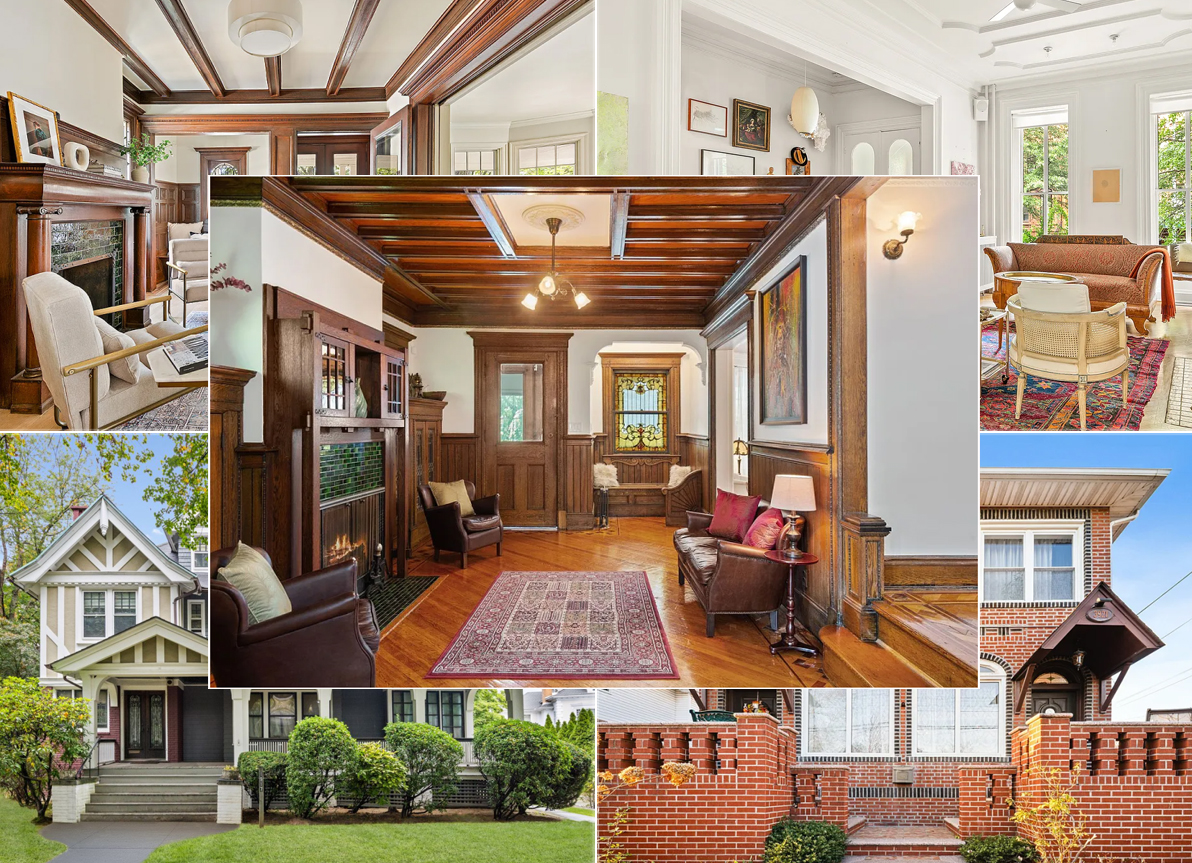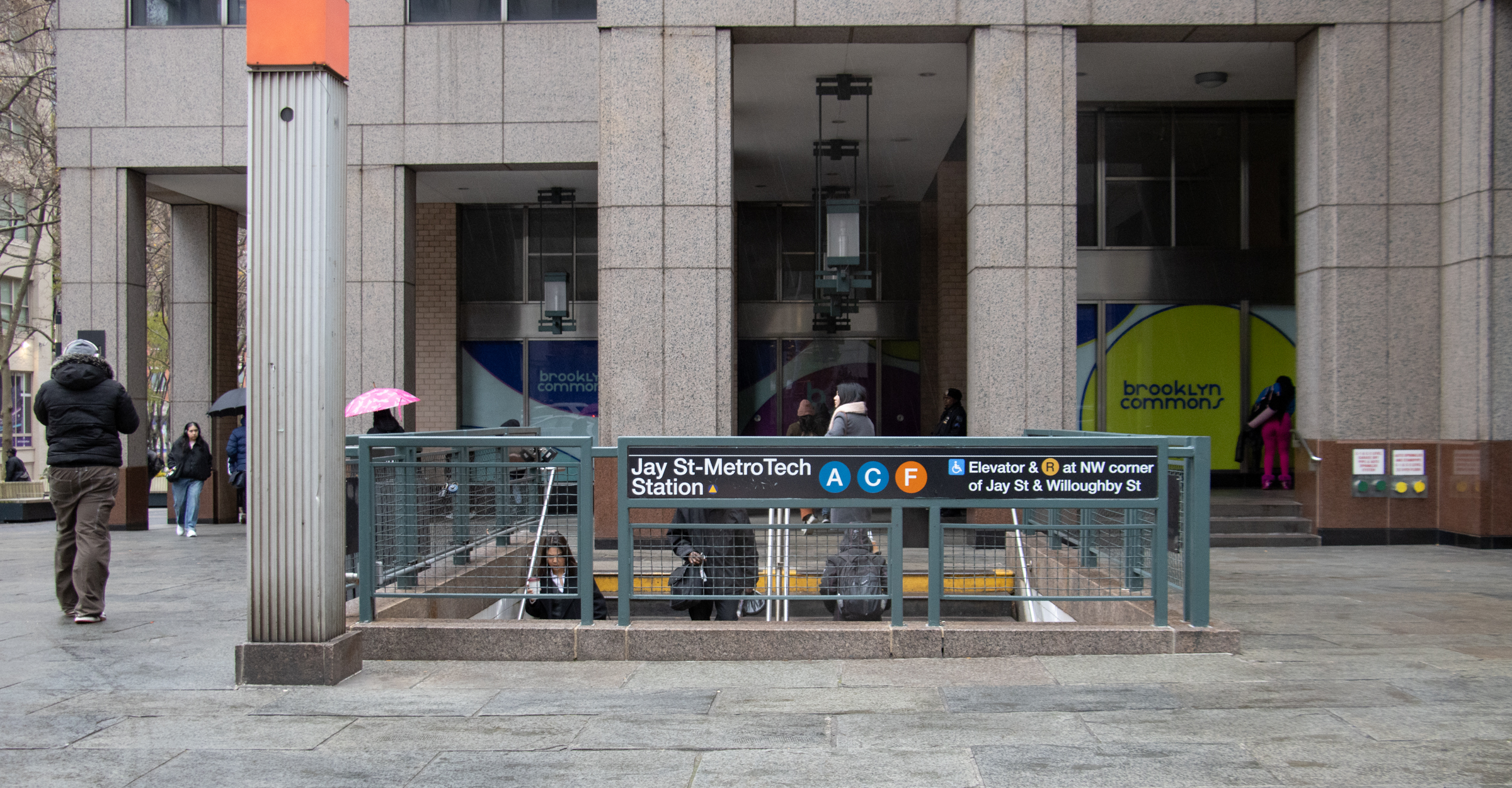Officers' Row: Let's Have Our Cake and Eat It Too
For an event that was whose main purpose seemed to be to present the destruction of Officers’ row as a fait accompli, last night’s public hearing had just the opposite effect. A study by the Army Corps of Engineers of the structural integrity of the ten nineteenth century houses was made available for the public…


For an event that was whose main purpose seemed to be to present the destruction of Officers’ row as a fait accompli, last night’s public hearing had just the opposite effect. A study by the Army Corps of Engineers of the structural integrity of the ten nineteenth century houses was made available for the public to view last night for the first time, and even a cursory look had everyone we spoke to questioning the BNYDC‘s position that the houses are not worth saving; what’s more, there were some creative ideas for alternative designs floated during the public milling-about period that would enable the preservation of Officers’ Row while still providing a large on-site supermarket.
Unbeknownst to us, the 7 o’clock public event was preceeded by a 6:15 press conference where a number of politicians (including Marty Markowitz and Letitia James, above) and Navy Yard officials voiced their support for the creation of a supermarket on the site and did their best to parrot the party line that it is economically unfeasible to save Officers’ Row in the process. To wit:
Hakeem Jeffries:“While historic preservation of this site is a respectable goal, it appears that the deterioration of Admiral’s Row has been so extensive over the years that rehabilitation of the site would be extremely cost prohibitive.”
David Yassky: “After intensive study, responsible preservation entities at every level have concluded that these structures cannot be preserved without a prohibitively high financial commitment.”
Albert Vann: “I am very much in favor of preserving the rich heritage of historical buildings in Brooklyn, but not at the expense of meeting the needs of the people of Brooklyn for fresh produce and jobs.”
If it sounds like they’re all reading from the same script, they are. (For some reason we were erroneously sent an email from the BNYDC soliciting support letters and providing the same talking points that appear in all the submissions.) The problem with the political rhetoric like the quotation from Council Member Vann, in our view, is that it frames the issue as an either-or proposition, and in so doing tries to press familiar class and race buttons that do nothing to further meaningful discussion. This tactic tries to equate an interest in preserving the existing structures with wanting to deprive lower-income people of fresh vegetables. The truth is that this is not an either-or issue. No one on the preservation side of the debate that we’ve talked to is against building a supermarket. If you were a resident of one of the nearby projects, however, that’s certainly the impression you’d get from listening to the public leaders.
The Army Corps of Engineers study that was available for review last night (though not for distribution) put the cost of restoring the ten buildings at about $25 million, significantly less than what the BNYDC has been telling people; what’s more, according to one of the engineers manning the tables, eight of the ten houses are still structurally sound. Additionally, even a back-of-the-envelope sketch like the one above from Pratt’s Brent Porter shows that there may be much more creative solutions that let the community have its cake and eat it too. The BNYDC has done a commendable job at restoring and adaptively reusing much of the rest of the Navy Yard to date and has even more impressive plans for the future; unfortunately, we don’t think that means it should get a free pass to tear Officers’ Row down without a transparent and public process of evaluation. This could be an opportunity to do something really exciting with the six acres of land (and one that takes into consideration factors like what kind of market options may present themselves on nearby Myrtle Avenue). How about a design competition? How about soliciting private funds to lessen any extra burden of preservation? This is too important to let short-term political and economic expediency be the only factors in a decision-making process.
Update: It was just brought to our attention that in his letter yesterday to local, state and federal authorities, Navy Yard president Andrew Kimball did qualify his unambiguous position about a lack of preservation restrictions on the transfer by saying that the renderings that have been circulating are not set in stone:
BNYDC will work with local leaders to organize a design charette with the community in early 2008 to obtain input on the design criteria that should be included in a the Request for Proposal that BNYDC intends to issue shortly thereafter. BNYDC will follow the model established by HPD on the Brig site for community input on the RFP process.
Officers’ Row Preservation Coming to a Contentious Head [Brownstoner]
For Officer’s Row, Supermarket All But Certain [Brownstoner]
Photo of James and Markowitz by Adrian Kinloch.








Ella,
1. There is an existing parking lot on the 7 acre site that is not being used at all. That is where the parking will go.
2. The site is 7 acres. There is room for Admirals Row, parking, and the industrial buildings.
3. You can pay market rate to renovated the houses, or you can pay $25 or $30 million. If they send out an RFP for the job, the numbers will be far less than $30 million unless it is handed off to a political crony that will spend $5 million on the houses and pocket the difference.
It takes a little creativity to do a project like this well, but there are ample amounts of it available in the community. The numbers do work, and the project will work if given the chance.
Cake will be worthless once atlantic yards is built
Preservation 101:
There are compatible adaptive uses
and incompatible adaptive uses.
Splicing a row of nineteenth century houses somehow onto the side of a giant supermarket is an incompatible adaptive reuse. It would not meet the Fed’s standards set forth in the “Secretary of the Interior’s Guidelines for Historic Preservation”, the bible for these sorts of things.
a consiltant
Wait Ella are you saying that Shahn Anderson the “savior” of Broken Angel doesnt know what he’s talking about. I mean he saved the architecture and created housing AND made a profit…..
Oh wait, the architecture was taken down????? There is no housing????? The unfinished project is losing value by the second???
Oh in that case – Ella I guess your right.
The rendering shown up there reminds me alot of drawings that I used to see hanging on the walls at architecture school. They were pretty pictures, and thought provoking, but if probed a little deeper, you realized that they have no basis or grounding in physical or financial realities. Architecture students and professors are famous for these kinds of theoretical exercises which help young designers flex their architectural muscles. However, once you leave the ivory tower, you realize that that kind of configuration would never work for several reasons:
1) There’s no parking shown in that drawing. As much as I’d like to believe that this supermarket could survive based solely on people taking transit, it’s not gonna happen.
2) In order to fit both a supermarket and the keep the houses, you’d have to get rid of a newly planned industrial building that the Navy Yard has been showing on their renderings that were published on brownstoner a while ago. The Navy Yard is a mission-driven organization dedicated to creating and preserving space for industrial businesses. They are proposing this site as a retail development as a benefit to the community. They’d really rather uses all the land for industrial. SO basically a scheme that asks the Navy Yard to dedicate even more land to retal and get rid of the retail will be dead in the water.
3) And finally, the profit that a supermarket will generate will no be nearly enough to support the additional $25 million to renovate the houses. (incidentally, I seem to remember the Navy Yard floating a $30 million number a while back, so I don’t see why you say that the Army’s $25 million is so far off) And the specialty retail proposed for those house will not come close to being able to justify those high renovation costs either. Do you really belive that anyone is going to want to open a high end boutique or fancy bakery across the street from a public housing project with like 50% unemployment. This is not smith street or Fifth ave. It’s not even Myrtle Ave or Dekalb. There are plenty of locations in surrounding neighborhoods that would be more likely to support that kind of retail. No smart retailer would open those kind of stores.
Don’t get suckered in to believing nonsense from people who don’t know what they are talking about just because they are showing you pretty pictures. Do some research on your own. Talk to people who understand construction costs, historic preservation and the financial realities of building, owning and operating a retail establishment. It just doesn’t work.
-Ella
Nice rant, 10:22. There is no proposed developer. The developer will be selected by a request for proposals. Oh, wait, now you’ll tell me that process will just be a sham cover for selecting the corrupt developer that with “ties to Marty, Yassky and Jefferies.”
Hey, speaking of the developer, 10:58 is also incorrect. The request for proposals will select a private developer. You know, there are real issues associated with the Navy Yard’s proposal that don’t need to be muddied up with absurdities.
I have a sawzall that cost $350. Does that count?
Hey Shahn whats up with that last dump you took on – Broken Angel? Been awfully quiet on that one
I’m sure a private developer doesn’t have the overhead that either the Army Corp. of Engineers or the Navy Yard does and could do this for less. But a private developer will never touch these buildings, because only the Navy Yard or the City of New York will be able to do the work, and they are both bloated beaurocracys.